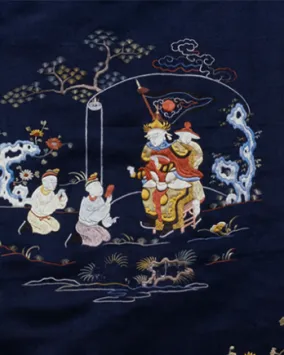Rachel
Silberstein

Rachel
Silberstein
- Website
Bio
Rachel Silberstein is a cultural historian of visual and material culture in early modern China, specializing in fashion and textile handicrafts. She earned a DPhil in Oriental Studies from the University of Oxford (2014) . Her thesis is entitled “Embroidered figures : commerce and culture in the late Qing fashion system” uses vernacular texts and material culture to explore the importance of handicraft commercialization and fashionable dress for Chinese women during the mid-late Qing period. Her MA is in Chinese Linguistics and Language from the School of Oriental and African Studies, University of London. She is currently a lecturer in the Jackson School of International Studies, University of Washington, where she teaches classes on fashion history, and Chinese material culture. Rachel is the Book Reviews editor for Textile History.
Veronika Gervers Research Fellowship participant
Fellowship Year: 2012
Publications
- 2016Embroidered Ladies: Fashion and Commerce in Nineteenth-Century China (forthcoming).
- 2016Fashionable Figures: Narrative Roundels and Narrative Borders in Nineteenth-Century Han Chinese Women's Dress. Costume: The Journal of the Costume Society. Volume 50, Issue 1, pp. 63 - 89. 01/2016
- 2016Cloud Collars and Sleeve Bands: Commercial Embroidery and the Fashionable Accessory in Mid-to-Late Qing China. Fashion Theory Volume 21, 2017 - Issue 3. 24 Mar 2016. 245-277. DOI: 10.1080/1362704X.2016.1150670
- 2015Silberstein, R. "Eight Scenes of Suzhou: Landscape Embroidery, Urban Courtesans, and Nineteenth-Century Chinese Women’s Fashions." Late Imperial China, vol. 36 no. 1, 2015, pp. 1-52. Project MUSE, doi:10.1353/late.2015.0001
